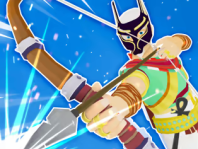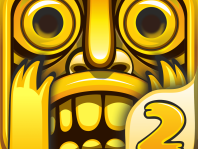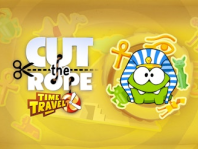Rummikub
Unraveling the Intricacies of Rummikub: A Tale of Tiles, Strategy, and Tradition
Delving into the Essence
Rummikub (/ˈrʌmikjuːb/, "rummy cube") stands as a testament to the blending of cultures and gaming traditions, offering players a captivating journey through the world of tile-based strategy. Designed for 2 to 4 players, this game seamlessly combines elements from the card game rummy and the intricate mechanics of mahjong. At its core lie 106 tiles, comprising 104 numbered tiles spanning from 1 to 13 in four vibrant colors, each with two copies, alongside the inclusion of two versatile jokers. As the game unfolds, players are initially dealt 14 or 16 tiles, and through strategic placement and calculated moves, they endeavor to form sets of at least three tiles, be they groups or runs.
Evolving Mechanics and Timeless Appeal
Rummikub is more than a mere pastime; it's a testament to the ingenuity of its creator, Ephraim Hertzano, a visionary who crafted the game in the aftermath of World War II. With humble beginnings in his backyard, Hertzano handcrafted the inaugural sets, embarking on a journey that would see the game's ascent to global acclaim. From door-to-door sales to becoming Israel's premier export game, the trajectory of Rummikub is one marked by innovation and resilience.
The game's journey didn't end there; it found its way to American shores in the 1970s, courtesy of Irv and Arline Kossoff, who recognized its potential and brought it to the bustling streets of New York. With Arline's adept translation of the rules from Hebrew to English, Rummikub swiftly captured the hearts and minds of players across the United States, becoming a bestseller and cementing its status as a household name.
Embracing Tradition in a Modern Era
In its evolution, Rummikub has undergone refinement, with the Sabra version emerging as the predominant variant, embodying the spirit of the game in its purest form. However, variations persist, each offering a unique twist on the game's timeless mechanics. From Lemada Light Industries Ltd's initial production to its adaptation for modern platforms, Rummikub remains a beacon of tradition and innovation.
Beyond its cultural significance, Rummikub transcends borders, finding resonance in countries like Turkey, where it is affectionately known as Okey. Here, amidst familial gatherings and bustling cafes, the game thrives, serving as a testament to its enduring appeal and universal allure.
Embracing the Future: Rummikub in the Digital Age
In today's digital landscape, Rummikub continues to captivate audiences worldwide, with millions of players connecting online to test their skills and vie for the coveted title of Rummikub Master. With the game's availability on platforms like Google Play, players can immerse themselves in its rich tapestry of strategy and chance, forging connections with friends and family across the globe.
Whether engaging in a casual match or participating in a customized game, the allure of Rummikub remains undiminished, offering a timeless experience that transcends generations. As players strategize, adapt, and ultimately triumph, they become part of a storied tradition, adding their own chapter to the enduring legacy of this beloved game.
In Conclusion
Rummikub isn't merely a game; it's a testament to the enduring power of tradition, innovation, and the universal language of play. As players gather around tables or connect online, they embark on a journey that transcends boundaries, uniting them in a shared pursuit of victory and camaraderie. In a world of fleeting trends and ephemeral distractions, Rummikub stands as a beacon of stability and joy, inviting players to immerse themselves in its timeless embrace and create memories that will last a lifetime.

































